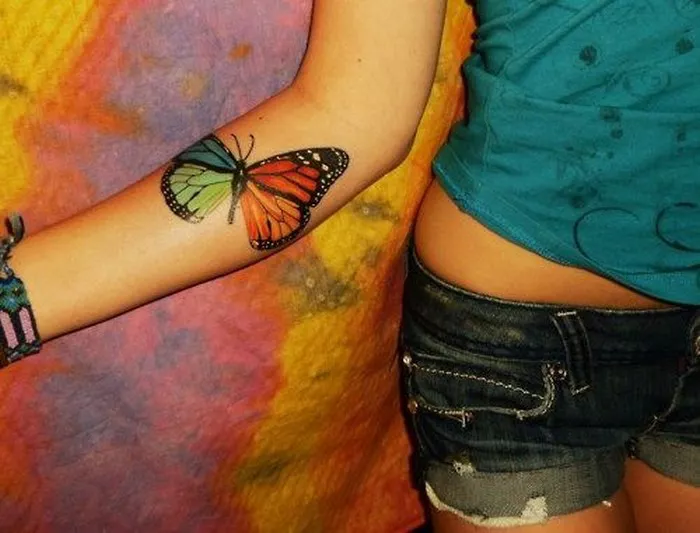Tattoos have been a form of self-expression for centuries, with each design holding its own unique significance. Among the myriad of tattoo designs, the butterfly stands out as one of the most popular and enduring choices. In this article, we delve into the prevalence of butterfly tattoos, exploring the cultural, symbolic, and aesthetic reasons behind their widespread appeal.
The History of Butterfly Tattoos:
To understand the prevalence of butterfly tattoos, it’s essential to delve into their historical roots. Tattoos, as an art form, have been practiced across various cultures for thousands of years. In many ancient civilizations, including Egyptian, Greek, and Native American cultures, the butterfly held symbolic significance, representing transformation, rebirth, and the soul’s journey.
The Modern Era:
In the modern era, the popularity of butterfly tattoos has surged, particularly in Western cultures. The 20th century witnessed a significant shift in societal attitudes towards tattoos, with body art becoming more mainstream and accepted as a form of self-expression. During this time, butterflies emerged as a favored motif among tattoo enthusiasts.
The Appeal of Butterfly Tattoos:
Several factors contribute to the enduring appeal of butterfly tattoos:
1. Symbolism: Butterflies symbolize various concepts, including metamorphosis, freedom, beauty, and resilience. For many individuals, getting a butterfly tattoo serves as a reminder of personal growth, overcoming challenges, or embracing change.
2. Aesthetic Versatility: Butterfly tattoos come in a myriad of designs, sizes, and styles, allowing for endless customization. Whether someone prefers a minimalist black ink outline or a vibrant, intricate design filled with color and detail, there’s a butterfly tattoo to suit every taste.
3. Universal Appeal: Unlike some tattoo designs that may hold specific cultural or religious meanings, butterflies resonate with people across different backgrounds and beliefs. This universal appeal contributes to their widespread popularity.
4. Feminine Symbolism: While butterfly tattoos are not exclusive to any gender, they are often associated with femininity. The delicate and graceful nature of butterflies appeals to many women, who view them as a symbol of femininity, beauty, and grace.
5. Memorial and Commemorative Purposes: For some individuals, butterfly tattoos serve as a tribute to loved ones who have passed away or as a way to commemorate significant life events. The butterfly’s symbolism of transformation can be deeply meaningful in these contexts.
The Influence of Pop Culture and Media:
The prevalence of butterfly tattoos in popular culture has also played a role in their widespread adoption. Celebrities, musicians, and influencers often showcase their ink on social media platforms, influencing trends and inspiring others to follow suit. Additionally, the portrayal of butterfly tattoos in films, television shows, and magazines further reinforces their status as a desirable and fashionable choice.
The Rise of Tattoo Culture:
In recent years, tattoo culture has experienced a renaissance, with tattoo studios becoming increasingly commonplace in urban centers worldwide. This accessibility has made it easier for individuals to get tattoos, including butterfly designs, as artists continue to push the boundaries of creativity and innovation.
The Influence of Social Media:
The advent of social media has had a profound impact on the prevalence of butterfly tattoos. Platforms like Instagram, Pinterest, and TikTok serve as virtual galleries where people can showcase their tattoos, seek inspiration, and connect with like-minded individuals. The visual nature of these platforms has contributed to the visibility and popularity of butterfly tattoos within online communities.
Cultural Significance:
Beyond their aesthetic appeal, butterfly tattoos hold cultural significance in various communities around the world. In some Indigenous cultures, butterflies are seen as spiritual messengers or symbols of protection. In Japanese folklore, butterflies are associated with the souls of the departed. Understanding these cultural nuances adds depth to the symbolism of butterfly tattoos for those who choose to adorn themselves with this motif.
Conclusion:
In conclusion, butterfly tattoos are incredibly common and hold enduring appeal for a multitude of reasons. Their rich symbolism, aesthetic versatility, and cultural significance have cemented their status as a timeless choice in the world of body art. Whether as a symbol of personal transformation, a nod to nature’s beauty, or a tribute to loved ones, butterfly tattoos continue to captivate and inspire individuals seeking to express themselves through ink. As tattoo culture continues to evolve, the allure of the butterfly tattoo shows no signs of fading, ensuring its prevalence for generations to come.

